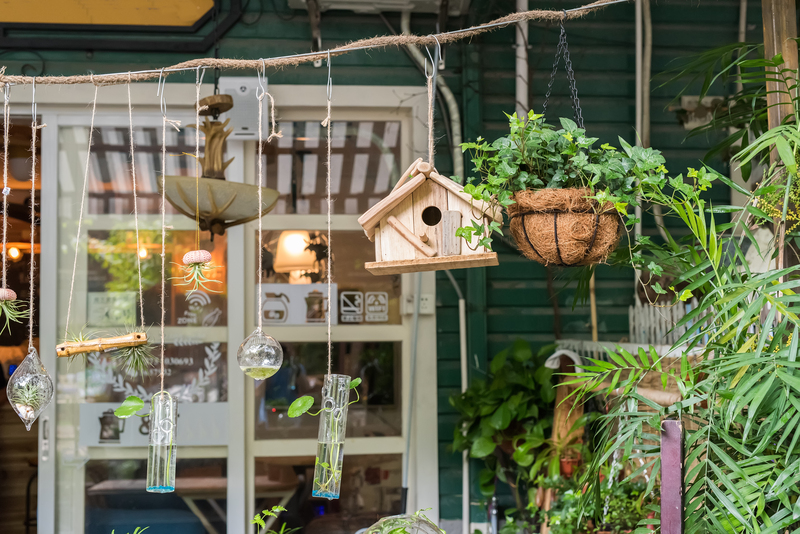Cost-Effective Choices for Packaging and Cardboard Disposal
Packaging materials and cardboard disposal methods are crucial considerations for businesses and households aiming to balance environmental responsibility and cost efficiency. With the rise of e-commerce, packaging waste, specifically cardboard, has become a significant contributor to landfill and recycling streams. Navigating the various cost-effective packaging options and responsible cardboard disposal methods not only reduces expenses but also aids in environmental protection. In this comprehensive guide, we explore budget-friendly strategies, industry best practices, and innovative solutions for managing packaging and cardboard waste sustainably.
Why Focus on Cost-Effective Packaging and Cardboard Disposal?
The global surge in online shopping and shipping has led to an exponential increase in single-use cardboard and packaging. Managing this waste efficiently is essential for:
- Cost savings: Lowering expenses related to materials and disposal
- Environmental impact: Reducing carbon footprint and promoting sustainability
- Operational efficiency: Streamlining logistics and storage
- Regulatory compliance: Meeting local and international waste management standards

Choosing Budget-Friendly Packaging Materials
Opting for affordable packaging solutions can significantly influence your bottom line while maintaining product safety. Here are some cost-effective alternatives to traditional packaging:
1. Recycled and Reusable Cardboard
- Use recycled cardboard boxes which are often less expensive than new ones
- Re-purpose boxes received from suppliers for outbound shipping
- Consider double-walled cardboard for heavy items, as they are more durable and can be reused multiple times
2. Corrugated Pads and Inserts
- Corrugated pads provide cushioning at a lower cost than custom foam or plastic inserts
- Reduces the need for excess packaging material by fitting products securely
- Lightweight nature helps lower shipping costs
3. Alternative Eco-Friendly Packaging Materials
- Explore biodegradable mailers, like those made from cornstarch or mushroom fibers
- Switch to
paper-based tapes instead of plastic adhesives - Use shredded old cardboard as void fill instead of buying new bubble wrap
4. Bulk Purchasing and Custom Sizing
- Buy packaging supplies in bulk to gain volume discounts
- Order **custom-sized cardboard boxes** to minimize extra material and shipping fill costs
- Standardize packaging dimensions to optimize storage and transportation
Smart Strategies for Cardboard Disposal
Managing cardboard waste represents a challenge for many businesses and individuals. Implementing efficient cardboard disposal methods can offer substantial benefits, including reduced waste-hauling fees and an improved corporate image.
1. Cardboard Recycling
The most eco-friendly and cost-effective way to dispose of cardboard is through recycling. Here's how to optimize it:
- Flatten boxes to save space and reduce collection frequency
- Remove contaminants like plastic, tape, and food residues
- Partner with local recycling centers for regular pickups
Fun fact: Recycling one ton of cardboard saves over nine cubic yards of landfill space.
2. Cardboard Compactors and Balers
- Investing in a cardboard compactor can reduce waste collection costs by compressing boxes into manageable bales
- Some waste management companies provide baler machines on lease or at a reduced cost as part of collection contracts
- Compacted cardboard is often more valuable to recyclers
3. Creative Cardboard Reuse
- Utilize old cardboard for internal storage, floor protection during construction, or as weed barriers in gardening
- Donate clean boxes to local schools, artists, or community organizations for projects
- Offer excess packaging materials on community exchange sites or social media
Best Practices for Businesses: Reducing Packaging and Disposal Costs
Businesses can implement a combination of policy, purchasing, and operational changes to make packaging and cardboard disposal more economical:
- Consolidate shipments: Ship more products together to reduce the number of packages used
- Train staff: Educate employees on proper box-breaking and recycling protocols
- Perform regular audits: Review packaging and disposal expenses to identify further savings
- Negotiate service contracts: Seek out the most cost-effective waste hauling and recycling providers
Home and Small Business Solutions for Packaging Savings
Even at a smaller scale, households and micro-businesses can make impactful changes. Here are a few simple, cost-saving tips:
- Reuse delivery boxes for storage or shipping outgoing products
- Create DIY crafts or practical household items from old cardboard
- Compost uncoated, unwaxed cardboard to enrich soil
- Break down boxes before recycling to save bin space and avoid pickup fees
Innovative Trends in Cost-Effective Cardboard Management
The packaging industry continues to innovate, offering new solutions to help consumers and companies alike save money and reduce waste. Key trends include:
1. Returnable Packaging Systems
- Programs that enable customers to return packaging materials for reuse by the business
- Subscription and rental services for sturdy,
returnable containers , reducing the need for single-use cardboard
2. Digitization and Smart Inventory
- Use of software to optimize packaging inventory and reduce overordering
- Barcode tracking for returnable crates and boxes
3. Design for Minimalism
- Switching to minimalist packaging designs that use less cardboard per shipment
- Investing in right-sized packaging machinery for automated selection
4. Partnerships and Take-Back Schemes
- Collaboration with local retailers or drop-off points for collecting used cardboard
- Participating in manufacturer-led take-back programs to close the loop on packaging waste
Optimizing Cardboard Disposal Costs with Recycling Revenue
Some businesses discover that efficient cardboard recycling can turn waste disposal from a cost center into a revenue source. Here is how to maximize your cardboard recycling returns:
- Sort and separate: Keep cardboard clean and dry for maximum recycling value
- Negotiate rates: Work with recyclers for bulk pickup and possible rebates based on volume and cleanliness
- Stay informed: Monitor market prices for waste cardboard (Old Corrugated Containers, or OCC) to time disposals for peak rates
Tip: If your business generates significant cardboard waste, contact local paper mills or large recyclers directly for better pricing and regular pickups.
Comparing Disposal and Recycling Costs: Facts & Figures
The costs related to packaging and cardboard disposal can be significant. Consider these statistics:
- Landfill Tip Fees: The national average landfill fee in the US is around $55 per ton, while recycling services may charge $30-40 per ton or even pay for high-quality OCC.
- Reduced Hauling: Compressing cardboard via balers can lower collection frequency, potentially saving hundreds per month for medium-sized businesses.
- Packaging Reduction: Right-sizing packaging can cut material usage by 15-25%, offering substantial annual savings.
Regulatory and Environmental Considerations
Adopting cost-effective cardboard disposal and packaging practices aligns not only with financial goals but also with broader compliance and ethical requirements. Companies should be aware of:
- Local regulations regarding commercial waste and recycling mandates
- Regional incentives or tax breaks for sustainable waste management investments
- Corporate social responsibility (CSR) standards for environmental stewardship
Key Takeaways: Sustainable Savings and Circularity
- Choose recycled and reusable packaging wherever possible
- Implement efficient flattening, sorting, and recycling routines for cardboard disposal
- Leverage creative reuse, both internally and via community channels
- Regularly audit your packaging use and disposal expenses for potential improvements
- Explore emerging industry trends (like take-back schemes and digital inventory) to stay ahead of the curve
With smart planning and targeted action, businesses and households can dramatically reduce the costs and environmental impact linked to packaging and cardboard disposal.

Frequently Asked Questions about Cost-Effective Packaging and Cardboard Disposal
What is the most economical way to dispose of cardboard?
The most cost-effective way to dispose of cardboard is to flatten and recycle it via local municipal or private recycling programs. Larger businesses should consider compacting cardboard to maximize pickup efficiency and even earn recycling rebates.
How can I reduce my packaging costs without sacrificing quality?
Switch to right-sized boxes to match product dimensions, purchase materials in bulk, and substitute expensive, branded packaging with recycled materials or minimalist alternatives. Explore options like paper-based tapes and biologically-derived mailers to further reduce costs and environmental impact.
Are there revenue opportunities from cardboard waste?
Absolutely! Clean, baled cardboard is valuable to recyclers. Businesses generating large volumes of cardboard can sell it directly to recyclers or mills, offsetting or even exceeding the costs of waste collection.
What are some creative, low-cost ways to reuse cardboard?
- Make organizers or crafts for home and office
- Use as protective layers during painting, moving, or storage
- Create compostable mulch for gardens
- Donate to schools, charities, or makerspaces
Conclusion: Smart Choices for Cost-Effective Packaging and Cardboard Disposal
Effective management of packaging and cardboard disposal costs is a win-win for both your budget and the environment. By choosing recycled and reusable materials, right-sizing your packaging, and leveraging local recycling opportunities, you can significantly cut expenses while supporting sustainability. Stay informed, audit your processes regularly, and embrace industry innovations for the best results. Whether you are a business or a household, thoughtful packaging and waste practices pave the way for a greener--and more cost-efficient--future.